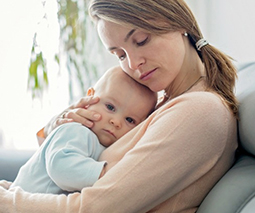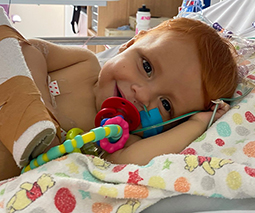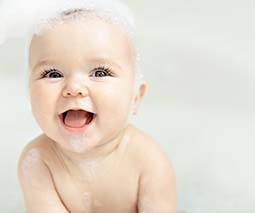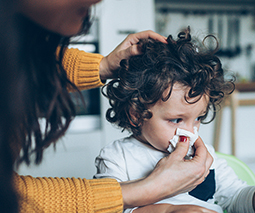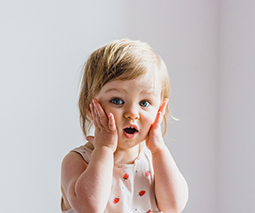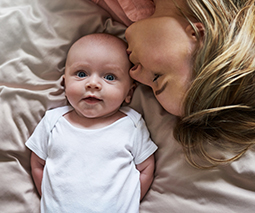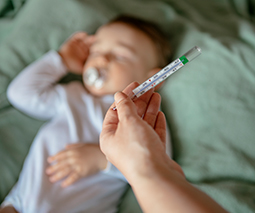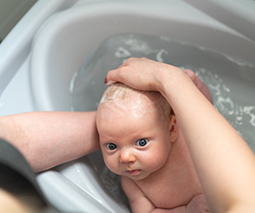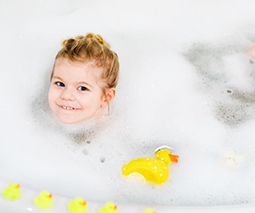The 6 different types of baby birthmarks
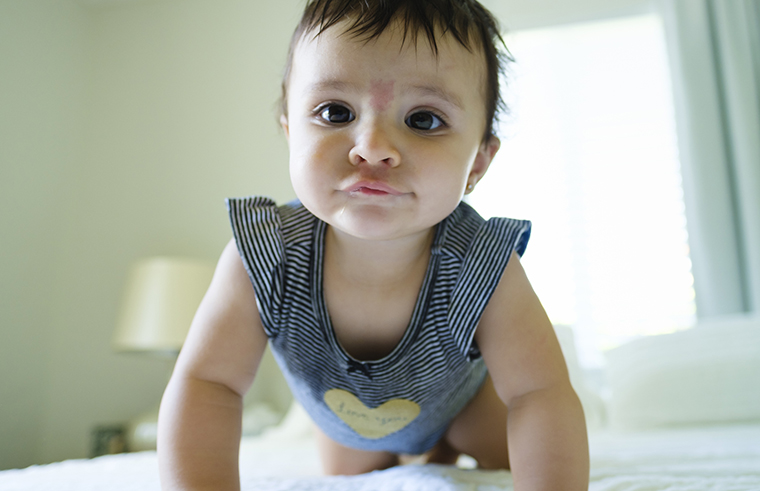
Birthmarks on infants are incredibly common with most babies having a mark of some sort. But did you know there are actually six different types? And there is plenty more you need to know about each one.
What’s a birthmark?
A birthmark is any kind of skin irregularity or mark that is either there upon birth, or that develops shortly after. The majority are completely harmless with many disappearing as the child grows, although in rare instances some can be an indicator of another issue. Why they appear is often a mystery and completely by chance, although we do know that red birthmarks are a result of an overgrowth of blood vessels; and blue or brown ones are caused by pigment cells. Sometimes birthmarks are even hereditary too, so don’t be surprised if your child has a similar birthmark to you or another family member.
1. Stork bite
Nearly half of all babies have this one which in medical terms is called naevus flammeus, but known more commonly as a ‘stork bite’ mark, salmon patch or macular stain. Generally this type of birthmark will:
- be pink and flat (not raised) with no two shapes being the same
- appear mostly on the back of the neck, forehead or eyelids
- disappear before the age of one (in most cases, although those on the back of the neck can take longer)
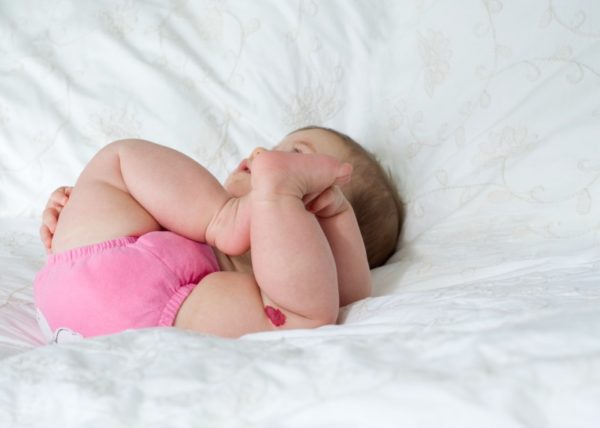
2. Strawberry mark
Also called haemangioma of infancy, strawberry marks appear after the baby is born – usually between one and four weeks of age. The general characteristics are:
- red and raised, lumpy marks
- once appeared they grow bigger for a few months, before stopping around six to twelve months
- they can disappear on their own accord after a few years, although some might take a little longer to go (up to 95 percent will be gone by age nine)
- if they are particularly large, impacting vision (if near the eye), or get an ulcer then medical treatment is required
- medications can also halt the mark’s growth, and laser therapy will reduce or remove the marks

3. Moles
Moles (or their technical name melanocytic naevus), can come in two forms – congenital and acquired. Congenital ones you’re either born with or they appear within the first year, but acquired moles appear in children after the age of two and are much more common. The size, shape and colour of moles vary – most are either brown, black or blue; they can be flat or lumpy, and some grow dark hairs. While sun safety is important, it is very rare for melanoma cancer to develop in moles – especially in childhood, but do watch for any changes to the mole or skin around it. Moles on the face are also often called ‘beauty spots’ and have been proudly sported by celebrities such as Marilyn Monroe and Cindy Crawford for many years, however they can be easily removed if the person wishes to do so.
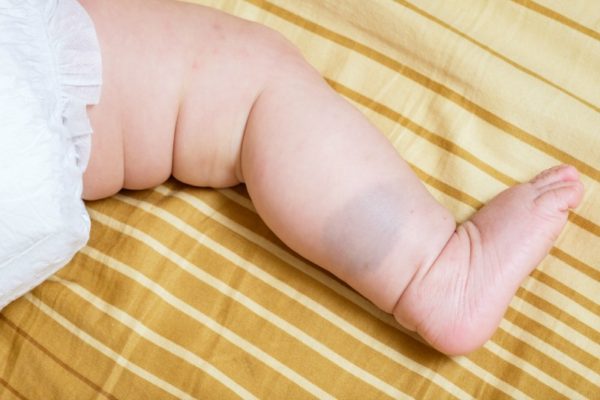
4. Mongolian spots
The medical term for a pigmented birthmark such as a Mongolian spot is a congenital dermal melanocytosis – these birthmarks look like bruises and are blueish in colour and flat. They’re more common in babies with darker skin (such as of Asian or African ethnicity), and are mostly found on the bottom and back. They are completely harmless and disappear by themselves as the child grows.
5. Port wine stain
Children are generally born with port wine stain marks (also called capillary malformation) and they appear mostly on the face as flat, pink or purple areas of skin which get darker with age. Puberty can make the marks thicker and lumpier, and occasionally they can indicate other health conditions such as:
- Sturge-Weber syndrome – abnormalities of the brain and sometimes eyes (port wine stain will be on the eyelid and forehead)
- Klippel-Trenaunay-Weber syndrome – the port wine stain will be on the leg and the bones, muscles and other tissue near it grow larger than the other normal limb
Laser therapy can remove port wine stain birthmarks however as they will not disappear by themselves – which is what British singer Ed Sheeran did (he was born with a large one on his face). Removing the birthmark can help children experiencing low self esteem because of how they look.
6. Cafe au lait spots
Appearing either at birth or shortly after, many children have one or two of these spots which are light brown (milk coffee colour), flat and often oval shaped. They remain for life and are usually harmless, however if your child has more than three or four, medical advice should be sought as in extremely rare cases they can be an indicator of a disease such as neurofibromatosis (a condition which causes tumours in the brain, spinal cord and nerves).
If you’re concerned about any birthmarks your child has please speak to your GP or a dermatologist.
